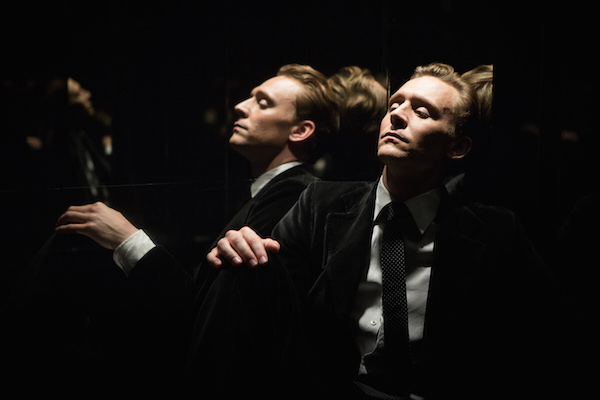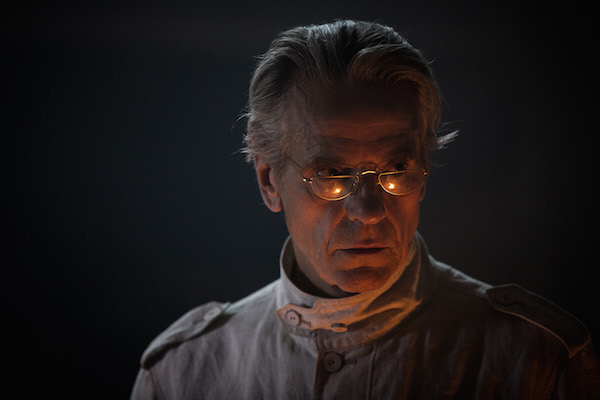
TWO TRIBECA FILM FESTIVAL REVIEWS: “HIGH RISE”
Director: Ben Wheatley | Screenplay: Amy Jump | Runtime: 119 minutes. Wed., Apr. 20, 8:30pm at the SVA Theater (333 W. 23rd St., btw. Eighth & Ninth Aves.). Thurs., Apr. 21, 9:45pm at Regal Cinemas Battery Park (102 North End Ave., at Vesey St.). Fri., Apr. 22, 3pm at Bow Tie Cinemas Chelsea (260 W. 23rd St., btw. Seventh & Eighth Aves.). Tickets: $20 plus $3.50 phone & web processing fee ($10 plus processing for pre-6pm screenings). Visit tribecafilm.com or call 646-502-5296.
Wheatley’s Slow-Descent Nightmare Has a Strange Allure: REVIEW BY SEAN EGAN | After decades spent in development hell (and everyone from Cronenberg to Roeg attached), J.G. Ballard’s 1975 novel “High-Rise” has finally made it to the big screen, no worse for wear, and as vital and disarming as one could hope for from a night of dystopian sci-fi cinema.
As directed by UK critical darling Ben Wheatley and adapted with an ear for darkly comedic dialogue by Amy Jump, the film mostly follows Tom Hiddleston’s Dr. Robert Laing, the newest tenant of the titular state-of-the-art (by ’70s standards), high-rise. With the all but self-sustaining complex’s frequent power failures stoking the fires of unrest between the working class families living on the lower levels and the high society upper-floor residents, Laing finds himself at the center of this hermetically-sealed community as it falls into utter chaos and total class warfare. The slow descent into absolute depravity and madness is fascinating to watch — not least of all because, for some reason, no one ever seems to consider leaving the building, even as the violence escalates and their home, literally and metaphorically, burns around them.
But, all things considered, this is not a movie that’s too concerned with plot in a traditional sense, but rather with feeling — specifically, feelings of tension and dread. Wheatley is aided immensely in this pursuit through the superbly surreal scenic design of the high-rise itself (an elevator constructed entirely of mirrors, a parking lot that seemingly stretches into infinity, a distressingly perfect “supermarket floor”), which lends the film an unsettling, yet engagingly off-kilter, atmosphere.
Instead of dispensing with story details in a straightforward way, Wheatley hops from vignette to vignette, and from striking image to striking image (framed immaculately by cinematographer Laurie Rose), disorienting viewers’ sense of temporality. Montages (expertly edited by Jump and Wheatley) are another one of the film’s strong suits, as carefully shot abstractions are cross-cut with scenes of extreme hedonism and violence (and some dancing) — all while an eclectic soundtrack scores the microcosmic apocalypse happening onscreen.

This more impressionistic method of storytelling lets one gradually acclimate to, and then immerse themselves in, the high-rise crew’s particular brand of collective insanity — allowing them to be both repulsed by and relish in its hallucinatory, gory glory. The cumulative effect gives “High-Rise” the feeling of a waking dream — or, more accurately, a nightmare — where everything is slightly off, and logic most certainly does not prevail. In the end, the utter collapse of society and civility — both in film and out — seems just like the only reasonable outcome, but an inevitability.
“High-Rise” is bold, darkly beautiful genre filmmaking at its very best. The mix of sumptuous visuals, heady themes and black comedy, as well as its similarities to other acclaimed dystopian sci-fi flicks (it’s a bit like “Snowpiercer” mixed with “Brazil”) all but guarantees passionate cult status, and soon — though its bizzaro, bloody aesthetic and ideology might not sit well with everyone. Keep an open mind, and it’ll knock the wind right out of you, and beg you to revisit its immaculately crafted world. You, like the film’s tenants, will find yourself disinclined to leave the strangely alluring, slow-motion nightmare that is “High-Rise.”
In Close Quarters, a Society Savaged: REVIEW BY STEPHANIE BUHMANN | Though seemingly set in 1975 London, “High-Rise” is a retro-futuristic thriller, whose subject is as timeless as it is timely: the mutation of human selfishness and narcissism into a devastating torrent of hate, violence and destruction. However, no matter how grim the abyss of the human psyche explored here, director Ben Wheatley knows how to tell the story of J.G. Ballard’s 1975 novel with enough dark humor that it leaves the viewer wide-eyed and entertained, rather than emotionally stirred. Though history is rich in examples that illustrate exactly what unfolds, we somehow manage to feel far removed from the scene. It is as if we were touring a surreal landscape, where the larger picture feels familiar, but the details belong solely to fiction.

This might be largely due to the main protagonist, Dr. Robert Laing (Tom Hiddleston), over whose shoulder we get to peek. Laing’s unwavering cool evokes some of the less lethal tendencies of “American Psycho” killer Patrick Bateman. Aspiring, desensitized and physically trim, Laing moves into a new high-rise development that promises to have all the conveniences and commodities modern tastes might desire, such as a swimming pool and a supermarket on the 17th floor. Still somewhat unfinished, it is a world unto itself, surrounded by nothing but a seemingly endless parking lot, which brings America’s sprawling strip malls to mind as well as Joni Mitchell’s lament: “They paved paradise and put up a parking lot.” This extreme bleakness is all the more reason for the inhabitants to focus all of their attention on the interior life of the building, which under such pressure is meant to implode.
Luxuriously reaching skyward like a “Metropolis”-worthy version of the Tower of Babylon, the building’s floors harshly illustrate the divided social structures of many a civilization: the lower, middle, and upper class. While Laing inhabits the 25th floor, the luckless documentary filmmaker Richard Wilder (Luke Evans), his heavily pregnant wife Helen (Elisabeth Moss) and their kids, for example, live in claustrophobic quarters on the second floor. In contrast, the creator of the structure, the architect Anthony Royal (Jeremy Irons), is perched in the multi-level penthouse, which includes an outdoor garden spacious enough to evoke an idyllic English countryside, horseback riding and goats included.
Unrest develops as minor power failures reveal the imperfections of the new structure, cracking the false facade of progressive and peaceful communion contained within. Tension escalates as various floors try to claim elevators for themselves and the upper echelon forbids noisy children from lower floors from using the pool. It is Wilder, who then sets off the spiral downward by crashing a posh pool party with a horde of unruly children. A dog drowns, and Wilder finds himself beaten senseless by a mob. As anarchy ignites, the inhabitants increasingly shut out the outside world, bolting doors and indulging in their darkest fantasies and lusts — be they for sex or blood. Only few are able to traverse between floors and castes without being attacked immediately. It is Laing, who does, having previously finessed both ends of the social spectrum: Wilder and Royal. Because of this, we get to trail him and observe much of the mayhem through his eyes, pondering the question of whether seeming neutrality is the key to survival.
All along, a fantastic soundtrack accompanies the end-of-the-world visuals, including such pioneering bands as The Fall and Can. A truly special treat comes in the form of Portishead’s first recording in seven years: a cover of ABBA’s “SOS.” When listening to the emotions expressed in those famous lyrics while watching the savage laceration of society on screen, both seem to belong to completely unrelated species. How can humanity and humans be so far apart from each other?

















